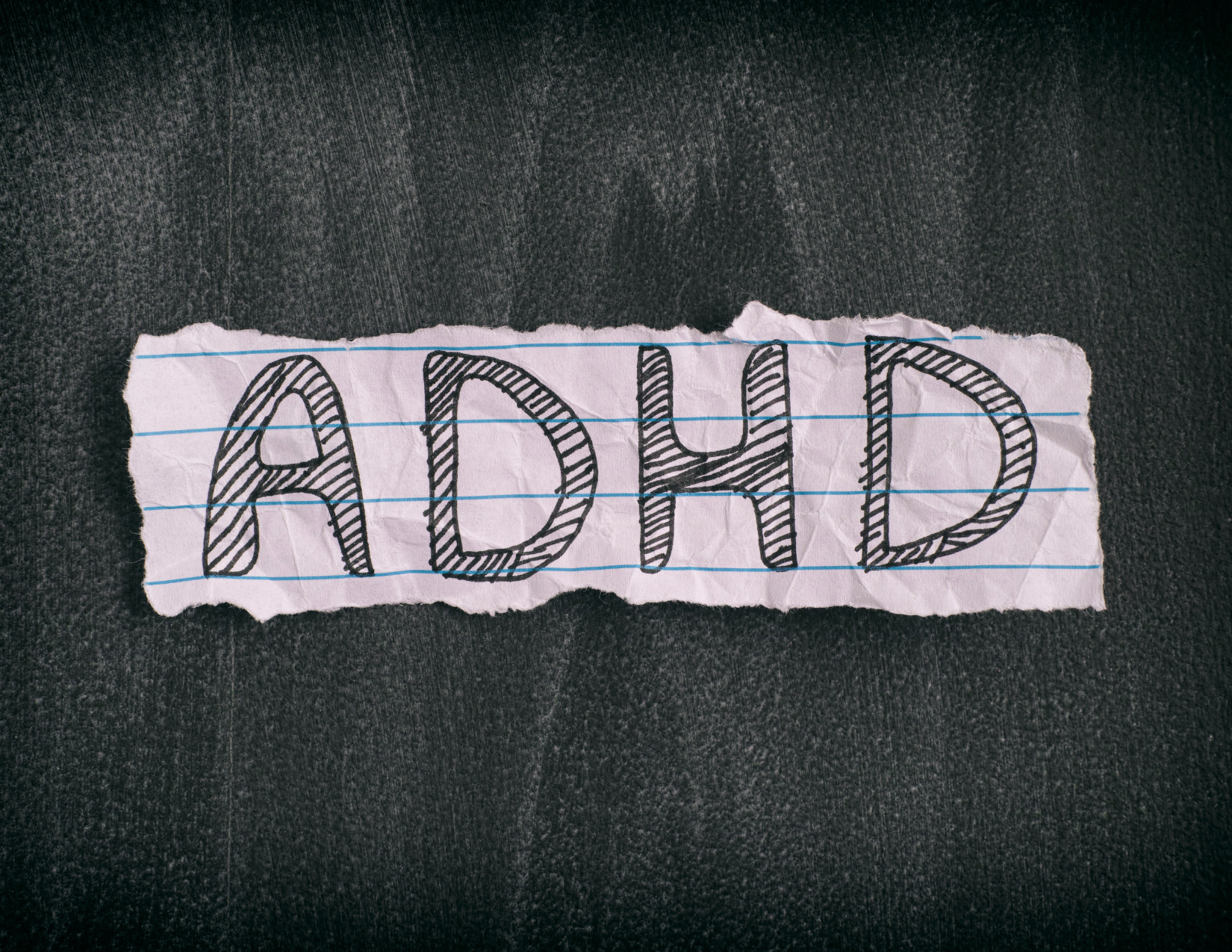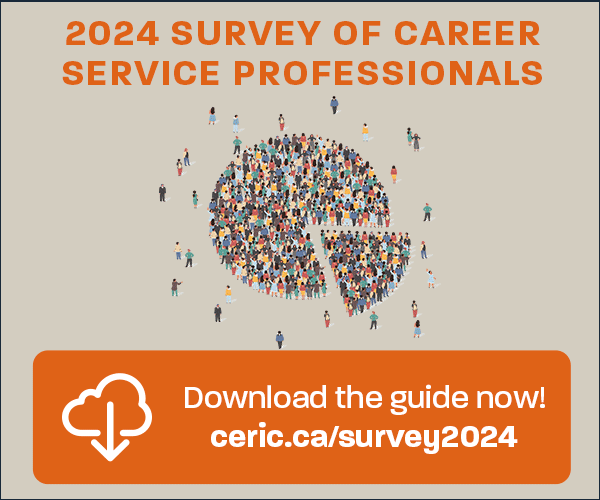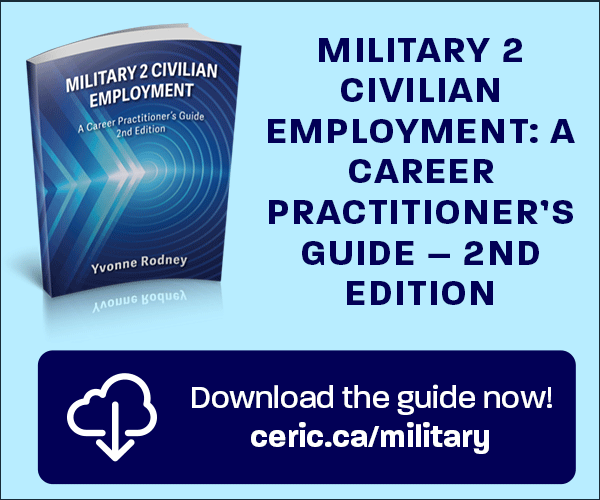Developmentally Relevant Career Constructs: Response Patterns of Youth with ADHD and LDs
Keywords:
attention deficit/hyperactivity disorder, learning disabilities, negative career throughts, attitudes, post-school transition, vocational identityAbstract
The vocational needs of adolescents with Attention Deficit Hyperactivity Disorder (ADHD) and Learning Disabilities (LDs) have been generally overlooked in vocational research. Exploration of relevant career development constructs can illuminate our understanding of the post-school transition needs and strengths of youth with disabilities. Given the increasing prevalence of these disorders, this study compared the response patterns of 258 adolescents with ADHD and LDs on dimensions of career thoughts, attitudes, and vocational identity. Participants were administered the Career Thoughts Inventory (CTI),
Career Maturity Inventory –R (CMI-R), and Vocational Identity (VI) to examine the differences in response patterns. Using univariate ANOVA analyses, results showed that levels of VI were significantly related to all CTI subscales and a CMI-R subscale. A diagnosis of LD or ADHD was significantly related to the Decision-Making Confusion (DMC) subscale of the CTI and the CMI-Att subscale of the CMI-R. Implications for practice and future research are discussed.
References
American Psychiatric Association. (2013). Diagnostic and Statistical Manual of Mental Disorders, 5th Edition Publisher: Arlington VA, American Psychiatric Press.
Bathory, M. J. (1967, December). Occupational aspiration and vocational maturity. Paper presented at the meeting of the American Vocational Association, Cleveland, OH.
Barkley, R.A. (2006). Attention-deficit hyperactivity disorder: A handbook for diagnosis and treatment (3rd ed.). New York, NY: The Guilford Press.
Bender, R. & Lange, S. (2001). Adjusting for multiple testing – when and how? Journal of Clinical Epidemiology, 54, 343-349.
Blustein, D. (2006). The psychology of working. Mahwah, NJ: Lawrence Erlbaum Associates.
Blustein, D. (2008). The role of work in psychological health and wellbeing: A conceptual, historical, and public policy perspective. American Psychologist, 63, 228–240. doi: 10.1037/0003-066X.63.4.228
Busacca, L. A., & Taber, B. J. (2002). The career maturity inventory-revised: A preliminary psychometric investigation. Journal of Career Assessment, 10, 441-455. doi: 10.1177/1069072702238406
Buttner, G. & Hasselhorn, M. (2011). Learning disabilities: Debates on definitions, causes, subtypes, and responses. International Journal of Disability, Development & Education, 58, 75-87.doi: 0.1080/103491
X.2011.548476.
Creed, P. A., Patton, W., & Prideauxa, L., (2007) Predicting change over time in career planning and career exploration for high school students. Journal of Adolescence 30, 377–392
Crews, M.E. (2006). The career maturity of college freshman as impacted by career counseling received in grades K-12: A reflective study. Unpublished dissertation UMI Number: 3232496.
Crites, J.O. & Savickas, M.L. (1996). Revision of the career maturity inventory. Journal of Career Assessment, 4, 131-138. i:10.1177/10 6907279600 400202
Deutsch, G.K. & Davis, R.N. (2010). Learning disabilities. In C.L. Armstrong & L. Morrow (Eds.), Handbook of medical neuropsychology: Applications of cognitive neuroscience (pp.237-250). New York, NY: Springer Science+Business Media, LLC.
Dipeolu, A. O. (1997). A study of the relationship between learning disabilities, dysfunctional career thoughts and adjustmentto disability (Doctoral dissertation, Florida State University). Dissertation Abstracts International, 58(07), 3938B.
Dipeolu, A.O., Reardon, R., Sampson, J., & Buckhead, E. J. (2002). The relationship between dysfunctional career thoughts and adjustment to disability in college student with learning disabilities. Journal of Career Assessment. 10, 413-427. doi: 10.1177/1069072702238404
Dipeolu, A.O. (2007). Career instruments and high school students with learning disabilities: Support for the utility of three vocational measures. Journal of Career Development, 34 59-78. doi: 10.1177/0894845307304065
Dipeolu, A.O., & Keating, N. (2010). Dysfunctional career thoughts and young adults with learning disabilities: Important considerations. Career Planning and Adult Development Journal, 25, 178-189.
Dipeolu, A.O. (2011). College students with ADHD: Prescriptive concepts for best practices in career development. Journal of Career Development, 38, 408-427.doi: 10.1177/0894845310378749 (published first online December 20, 2010).
Dipeolu, A.O., Hargrave, S., Sniatecki, J., & Donaldson, J. (2012). Improving prediction of significant career-related constructs for high school students with learning disabilities. Career Development Quarterly. 60, 207–220. doi: 10.1002/j.21610045.2012.00017.x
Dipeolu, A.O., Sniatecki, J., Storlie, C.A., & Hargrave, S. (2013). Dysfunctional career thoughts and attitude as predictors of vocational identity for young adults with ADHD. Journal of Vocational Behavior, 82, 79-84. doi:10.1016/j.jvb.2013.01.003
Fabian, E.S. & Liesener, J.J. (2005). Promoting the career potential of youth with disabilities. In S.D. Brown & R.W. Lent (Eds.). Career development and counseling: Putting theory and research to work. (pp. 551- 572). Hoboken, NJ: John Wily & Sons, Inc.
Foley-Nicpon, M., & Lee, S. (2012). Disability research in counseling psychology journals: A 20-
year content analysis. Journal of Counseling Psychology, 59, 392-398. doi:10.1037/a0028743
Geary, D. C. (2006). Learning disabilities in arithmetic: Problem-solving differences and cognitive deficits. In H. L. Swanson, K. R. Harris, & S. Graham (Eds.), Handbook of learning disabilities (pp.
–212). New York: Guilford Press.
Gregg, N. (2009). Adolescents and adults with learning disabilities and ADHD. New York, NY: The Guilford Press.
Grove, W. M. & Andreasen, N. C. (1982). Simultaneous tests of many hypotheses in exploratory research. The Journal of Nervous and Mental Disease, 70, 3-8.
Halpern, R. (2009). The means to grow up: Reinventing apprenticeship as a developmental support in adolescence. New York, NY: Routledge.
Holland, J. L., Daiger, D., & Power, P. (1980). My vocational situation. Palo Alto, CA: Consulting Psychologists Press.
Hood, A. B., & Johnson, R. W. (2007). Assessment in counseling: A guide to the use of psychological assessment procedures (4th Ed.). Alexandria, VA US: American Counseling Association. Individuals with Disabilities Education Improvement Act of 2004, 20 U.S.C. § 1400 et seq. Reauthorization of
the Individuals with Disabilities Education Act of 1990. (2004).
Jakobson, A., & Kikas, E. (2007). Cognitive functioning in children with and without attention-deficit/hyperactivity disorder with and without comorbid learning disabilities. Journal of Learning Disabilities, 40, 194- 202. Retrieved from http://ldx.sagepub.com
Jepsen, D. A., & Prediger, D. P. (1981). Dimensions of adolescent career development: A Multi-instrument analysis. Journal of Vocational Behavior, 19, 350-368.
Johnson, J. A., Smither, R., & Holland, J. L. (1981). Evaluating vocational interventions: A tale of two career development seminars. Journal of Counseling Psychology, 28, 180-183.
Kenny, M.E., Waldo, M., Warter, E.H., & Barton, C. (2002). School linked prevention: Theory, science, and practice for enhancing the lives of children. The Counseling Psychologist, 30, 726-748. doi:10.1177/0011000002305004
Korkman, M. & Pesonen, A.E. (1994). A comparison of neuropsychological test profiles of children with attention deficit-hyperactivity disorder and/or learning disorder. Journal of Learning Disabilities, 27, 383-
Retrieved from http://ldx.sagepub.com
Lapan, R. (2004). Career development across the K-16 years: Bridging the present to satisfying and successful futures.Alexandra, VA: ACA.
Mauer, E. B., & Gysbers, N. C. (1990). Identify career concerns of entering university freshmen using my vocational situation. Career Development Quarterly, 39, 155-170.
Mercer, C. D., & Pullen, P. C. 2005). Students with learning disabilities (6th ed.). Upper Saddle River, NJ: Pearson.
Mertler, C.A. & Vannatta, R.A. (2002). Advanced and multivariate statistical methods: Practical application and interpretation (2nd Ed.). Glendale, CA: Pyrczak Publishing.
Meyer, G.J., Finn, S.E., Eyde, L.D., Kay, G.G., Moreland, K.L., Dies, R.R., et al. (2001). Psychological testing and psychological assessment: A review of evidence and issues. American Psychologist, 56, 128-165, http://dx.doi.org/10.1037/0003066X.56.2.128.
Miller, I. W., & Haller, A. O. (1964). A measure of level of occupational aspiration. Personnel & Guidance Journal, 42, 448-455.
Monastra, V.J. (2008). Unlocking the potential of patients with ADHD. Washington, DC: American Psychological Association.
Ng, T, W. H., & Fieldman, D. C. (2007). The school-to-work transition: A role identity perspective. Journal of Vocational Behavior, 71, 114-134. doi: 10.1016/j.jvb.2007.04.004
Ngg, J. T. (2006). What causes ADHD? Understanding what goes on and why. New York, NY: Guildford Press.
Ochs, L.A., & Roessler, R.T. (2001). Students with disabilities: How ready are they for the 21st Century? Rehabilitation Counseling Bulletin, 44, 170-176.
Ofiesh, N., Mather, N., & Russell, A. (2005). Using speeded cognitive, reading, and academic measures to determine the need for extended test time among university students with learning disabilities. Journal of Psychoeducational Assessment, 23, 35-52. doi: 10.1177/073428290502300103.
Olkin, R. (2012). Disability: A primer for therapists. In E. M. Altmaier, & J. C. Hansen. (Eds.), The Oxford Handbook of Counseling Psychology (pp. 460–479). New York: Oxford University Press.
Osipow, S. H. (1999). Assessing career indecision. Journal of Vocational Behavior, 55, 147- 154.
Painter, C.A., Prevatt, F., & Welles, T. (2008). Career beliefs and job satisfaction in adults with symptoms of attention-deficit/hyperactivity disorder. Journal of Employment Counseling, 45,
-188. Retrieved from http:// onlinelibrary.wiley.com/journal/10.1002/(ISSN) 2161-1920
Patton, W. A. & Creed, P. (2007a). Theorizing adolescent career maturity: Existing evidence and directions for the future. In Skorikov, V. & Patton, W.A. (Eds.) Career Development in Childhood and Adolescence (pp. 221-232). Rotterdam: Sense Publishers.
Patton, W. A. & Creed, P. (2007b).Vocational Identity. In Skorikov, V. & Patton, W.A. (Eds.) Career Development in Childhood and Adolescence (pp. 143-162). Rotterdam: Sense Publishers.
Power, P. W. (2006). A guide to vocational assessment (4th ed). Austin, Texas: Pro-Ed Publisher.
Rojewski, J. W. (1999). Occupational and educational aspirations and attainment of young adults with and without LD: 2 years after high school completion. Journal of Learning Disabilities, 32, 533-552.
Sampson, J. P., Jr., Reardon, R. C., Peterson, G. W., & Lenz, J. G. (2004). Career counseling and
services: A cognitive information processing approach. Pacific Grove, CA: Brooks/Cole.
Sampson, J. P., Jr., Peterson, G. W., Lenz, J. G., Reardon, R. C., & Saunders, D. E. (1996). Manual for the career thoughts inventory: Professional manual. Odessa, FL: Psychological Assessment Resource
Saunders, D.E., Peterson, G.W., Sampson, J.P., & Reardon, R.C. (2000). Relation of depression and dysfunctional career thinking to career indecision. Journal of Vocational Behavior, 56, 288-298. Retrieved from http://dx.doi.org/10.1006/ jvbe.1999.1715.
Savickas, M.L. (2002). Career construction: A developmental theory of vocational behavior In D. Brown & Associates (Eds.), Career Choice and Development (4th ed., pp. 149-205). San Francisco: Jossey Bass
Shaywitz, S. (2003). Overcoming dyslexia: A new and complete science-based program for reading problems at any level. New York, NY: Vintage Books.
Skorikov, V., & Vondracek, F. W. (2007). Positive career orientation as an inhibitor of adolescent problem behavior. Journal of Adolescence, 30, 131-146. doi:10.1016/j.adolescence.2006.02.004
Super, D. E., Thompson, A., Lindeman, R., Jordaan, J., & Myers, R. (1981). The CareerDevelopment Inventory. Palo Alto, CA: Consulting Psychology Press.
Szymanski, E.M. (1993). Transition: Life span and life space considerations. Exceptional Children,
, 402-410. Retrieved from http://journals.cec.sped.org/ec/
Tabachnick, B. G. & Fidell, L. S. (2001). Using multivariate statistics. Needham Heights, MA: Allyn & Bacon.
Vash, C.L. & Crewe, N.M. (2004). Psychology of disability. New York, NY: Springer Publishing.
Vernick, S. (2002). The application of Holland’s career theory in modern day career services: Integrating the Self Directed Search and Career Thought Inventory. Florida State University. Center for the Study of
Technology in Counseling and Career Development (ERIC Document Reproduction Service No ED 465921).
Walsh, M.E., & Galassi, J.P. (2002). An introduction: Counseling psychologists and schools.The Counseling Psychologist, 30, 675-681. doi: 10.1177/0011000002305001
Wanberg, C. R. & Muchinsky, P. M. (1992). A typology of career decision status: Validity extension
of the vocational decision status model. Journal of Counseling Psychology, 39, 71-80.
Weyandt, L.L. (2001). An ADHD primer. Needham Heights, MA.
Allyn & Bacon. Whiston, S. C., & Quinby, R. F. (2009). Review of school counseling outcome research.
Psychology In The Schools, 46, 267-272. doi:10.1002/pits.20372
Whiston, S. (2011). Vocational counseling and interventions: An exploration of future “big” questions. Journal of Career Assessment, 19, 287-295. doi:10.1177/1069072710395535

Downloads
Published
How to Cite
Issue
Section
License
Copyright (c) 2020 Canadian Journal of Career Development

This work is licensed under a Creative Commons Attribution-NonCommercial-NoDerivatives 4.0 International License.
















